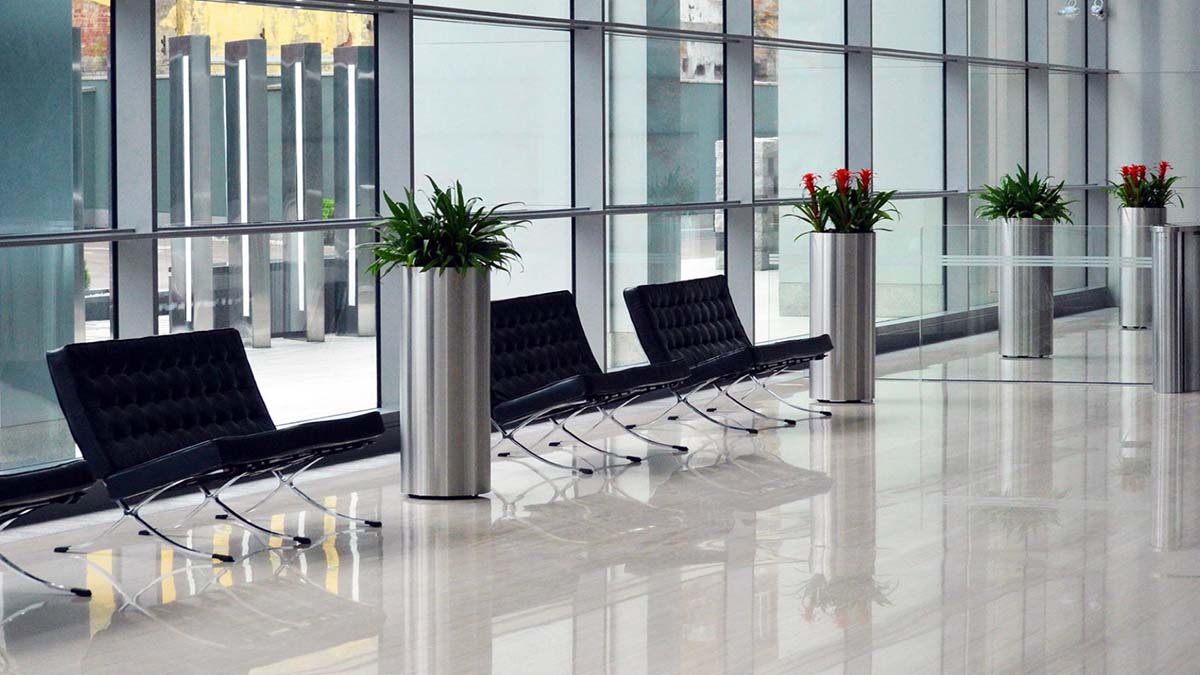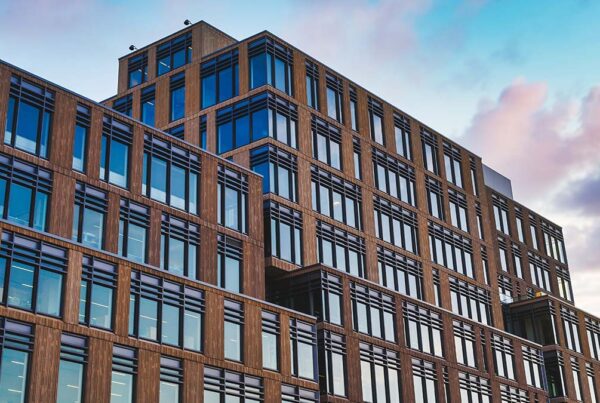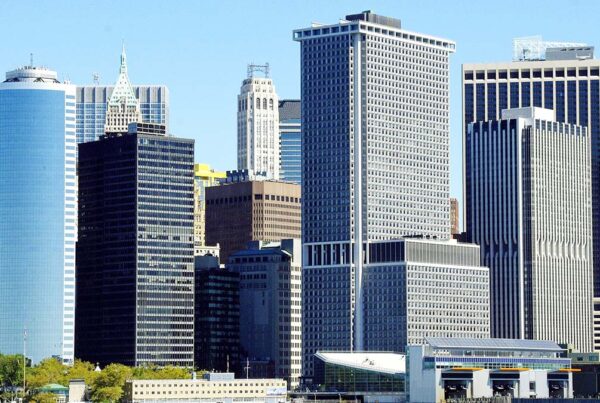
There are many real estate investing definitions that new investors need to learn when getting into commercial real estate, and Common Area Maintenance (CAM) is one of those.
CAM expenses are fees tenants pay to landlords to help offset costs for the overhead and operational expenditures of common spaces in a commercial property.
These include areas like hallways, elevators, parking lots, lobbies, and public restrooms.
CAM expenditures are unique to each property and are clearly outlined in commercial leases to eliminate confusion about what the CAM costs for each particular lease cover. Before signing a new lease, it is critical to understand what CAM expenses are and what they account for in each property.
What is Considered a Common Area in Commercial Real Estate?
A common area in commercial real estate is any location that is often utilized by two or more tenants in a single property. Since no individual renter has exclusive access to common areas, but the areas reflect upon all tenants of the property, it’s important for someone to be responsible for maintaining and cleaning the space on a regular basis.
As a result, the landlord and/or property management company take care of the common areas in commercial properties.
What Types of Commercial Real Estate Properties Use CAM Fees?
Not all types of commercial real estate leases contain CAM fees because not all types of commercial real estate properties have multiple tenants or common areas. The commercial real estate properties that most commonly have CAM fees included in their leases are:
If a single tenant occupies a property, they are often responsible for all space in the property. In the case of a large multi-family property, the landlord/property management company typically takes care of the common areas by default and include those costs in their monthly budget. Retail, office, and industrial properties are a bit different because different businesses can inhabit different sizes of space or require drastically different energy consumption. CAM fees help significantly in helping the landlord distribute these costs fairly amongst tenants.
What do Common Area Maintenance (CAM) Expenses Include?
CAM expenses vary depending on whether the lease is for an office, retail, or industrial property. While each lease is unique and can therefore contain an entirely unique set of CAM expenses, here’s an overview of typical CAM costs include for each type of commercial property.
What’s Included in Office CAM Fees?
1. Electricity – Included
Because of the way office buildings are designed, it’s difficult to add different electrical meters for different floors or areas for different tenants. As a result, electricity in office buildings is typically metered across the entire building and paid for by tenants in CAM expenses rather than sub-metered for each tenant. Landlords usually calculate this cost using a standard forty-hour work week and expect tenants to use about the same amount of electricity per square foot as other tenants. Therefore, electrical costs are usually included in CAM and split across all tenants based on the portion of the building they use.
2. Janitorial Costs – Included
Similar to electricity in office buildings, it’s challenging to ask tenants to hire janitorial services for their areas. Even if every company within an office building cleaned their own area, the landlord would still need to cover the main common areas such as lobbies, hallways, elevators, and restrooms. Because of this, janitorial costs are typically included in CAM expenses for tenants of office buildings.
3. Additional Costs – Included
Landscaping, parking lots, and administrative fees are typically included in office building CAM costs since these are shared spaces and services that all tenants use.
What’s Included in Retail CAM Fees?
1. Electricity – Not Included
Since multi-tenant retail buildings vary widely in electrical use, it is not common for retail spaces to include electricity in their CAM costs. Since each tenant typically has their own distinct space within a multi-tenant retail building, it is common for each space to be sub-metered and paid by the tenant
The exception is the electrical costs for general property and parking lot lighting, which are often rolled into CAM costs.
2. Janitorial Costs – Not Included
Multi-tenant retail properties have fewer common areas in general. For example, they often don’t have a shared lobby, public restrooms, or common hallways. As a result, janitorial costs are usually excluded from CAM costs, and each tenant is responsible for hiring services independently.
3. Additional Costs – Included
Landscaping, sidewalks, driveways, loading docks, and delivery areas maintenance fees are usually included in retail CAM costs and typically make up a significant portion of retail CAM expenses.
What’s Included in Industrial CAM Expenses?
1. Electricity – Not Included
Industrial CAM costs are very similar to retail CAM costs. Since tenants use dramatically different quantities of power depending on what their business does, industrial premises are often sub-metered.
2. Janitorial Costs – Not Included
Janitorial services are also separately contracted by tenants and are usually not included in Common Area Maintenance charges for industrial properties because there usually aren’t public commons areas, such as lobbies and bathrooms.
3. Additional Costs – Included
Industrial CAM expenditures often include general property and parking lot lighting, landscaping, and parking lot upkeep.
How are Common Area Maintenance (CAM) Fees Calculated?
Landlords can charge tenants for CAM expenses in a variety of ways. Some are intended to be simple, while others need more extensive accounting to account for the nuances of how the tenant is using the space. The method of calculating CAM costs is determined by what makes sense for both the tenant, the landlord, and the specific type of property. Here are a few common ways to calculate CAM costs:
1. Pro-rata Share of Square Footage
According to the National Association of Realtors, the primary method of calculating CAM costs is determining each tenant’s pro-rata portion of the property’s square footage. Each renter then contributes to the property’s CAM expenditures in proportion to the quantity of space they occupy. For example, let’s suppose a tenant occupies 30% of the property area and the landlord pays $3,000 in monthly expenditures for the common areas. In that case, the tenant should expect to pay 30% of the monthly expenses.
2. Load Factor
Some commercial leases include CAM costs in the rent by including it as a load factor. A load factor calculates the percentage of the building used as common area and then adds that percentage to the usable square footage of the leased space. For example, if a tenant pays rent based on 5,000 square feet but only has 4,500 square feet, the tenant is paying 10% as a load factor to account for CAM costs.
3. Fixed CAM Costs
If a landlord uses fixed CAM costs, it means they set a flat fee for common area maintenance and typically add a small annual increase to cover the cost of inflation. Fixed CAM fees can be applied to standard maintenance costs, as well as property taxes and insurance.
Fixed CAM costs are more common in properties owned by REITs as opposed to independent investors. This is because smaller investors could be in significantly more trouble if their expenses increase beyond the set CAM costs whereas REITs can more easily absorb those costs. However, according to the International Council of Retail Centers, there is an increase in shopping malls streamlining their CAM cost structure by transitioning to fixed CAM prices due to requests from anchor tenants.
4. Whatever Else a Tenant and Landlord Agree Upon
The three methods highlighted above are simply common practices, but unique circumstances may necessitate a different method for computing expenses depending on the tenant and landlord needs. As a result, the landlord and tenant may agree to whatever structure they feel is best for the lease, even if it doesn’t fall directly under one of the three methods outlined here.
Why is it Important to Know About CAM Expenses?
CAM Expenses are important to understand as a commercial real estate investor because calculating them and structuring them intelligently help you cover regular maintenance costs of your properties. If you don’t include CAM expenses—or miscalculate them—you could decrease your cash flow and ROI.



